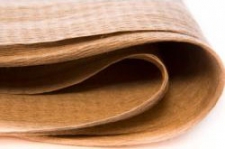
Plastics / Composites / Rubber
Chemical intermediates for production of polymers (building block, reaction component)
Additives for plastic formulation (dye, plasticizer, etc..)
Resins, compounds
Reinforcements (load, technical fabric, etc.)
You are here
-

Pebax® Rnew
Arkema
Pebax® Rnew is the first bio-based TPE to offer no compromise on high performance. Its outstanding mechanical, physical and chemical properties offer significant flexibility in a wide range of applications. Pebax® Rnew enables to bridge the gap between thermoplastics and rubbers.Last update 18/11/2013 -

ampliTex® non crimp fabrics
Bcomp Ltd.
Our non crimp fabrics are the preforms leading to the strongest and stiffest natural fibre composites currently on the market.
Our non crimp fabrics find applications in composite industry, sports & leisure, mobility, protection, design and interior objects, construction and consumer electronics.Last update 23/10/2014 -

Functional Cellulose Gels by JRS
JRS RETTENMAIER France
This is a water-insoluble, micro-crystalline cellulose that is processed with a water-soluble spacer in a special production process. The fiber-gel is a whitish powder that disperses in water, forms a three-dimensional network and that way can be used as a multifunctional additive in water-based systems. See long description for more information.
Last update 18/11/2016 -

Ethyl acetate
SEKAB Biofuels & Chemicals
Ethyl acetate is a solvent used in a wide range of applications, including printing inks, varnishes and car care chemicals and in the production of enamels, plastics and rubber. Ethyl acetate is also used in the food and pharmaceutical industry.Last update 04/06/2014 -

reSound™ NF
PolyOne France S.A.S
reSound™ NF reinforced materials are based on an eco-conscious, natural fiber-filled technology. Developed for lightweighting in advanced applications in transportation, these thermoplastic materials contain a minimum of 30% bio-based content, up to 50%. They feature densities 5-10% lower than comparable glass fiber formulations to reduce weight.Last update 03/11/2015


